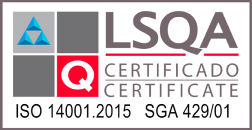Introduction
Air quality is a critical factor that affects not only public health but also the productivity and sustainability of mining and industrial operations. Air pollution, exacerbated by emissions from mining and industrial activities, represents a significant challenge that requires innovative solutions. . Artificial Intelligence (AI) emerges as a robust and powerful tool for air quality monitoring and forecasting, providing advanced capabilities that can transform environmental management in these sectors.
The Need for Air Quality Monitoring and Forecasting
Mining and industrial operations are significant sources of air pollutants, including particulate matter (PM), sulfur dioxide (SO2), nitrogen oxides (NOx), arsenic (As), and volatile organic compounds (VOCs). These pollutants not only affect the health of workers and nearby communities but also cause significant environmental damage. Continuous and precise air quality monitoring is essential to:
- Comply with environmental regulations
- Protect the health of workers and communities.
- Optimize operations to minimize environmental impact.
- Make informed decisions based on real-time data.
Artificial Intelligence: Transforming Air Monitoring
Artificial intelligence, particularly machine learning and deep learning, is revolutionizing the way air quality is monitored and forecasted. These technologies enable the analysis of large volumes of data in real-time, identifying operational patterns and trends that are impossible to detect using traditional methods.
Machine Learning and Deep Learning
Machine learning and deep learning algorithms are capable of:
- Analyzing Multivariate Data: These algorithms can handle multiple variables simultaneously, such as meteorological data, emission levels, and operational conditions, providing a holistic analysis of air quality.
- Detecting Non-linear Patterns: Unlike traditional statistical methods, AI models can detect complex non-linear relationships between variables, improving prediction accuracy.
- Continuously Updating: AI models can learn and adapt continuously with new data, improving their accuracy over time.
Internet of Things (IoT) and Big Data
The integration of AI with IoT and Big Data is crucial for effective air quality monitoring. IoT sensors distributed at various points in an industrial plant or mine can collect real-time operational and emissions data on various pollutants. This data is stored and processed using Big Data technologies, providing a rich foundation for AI models.
Applications in the Mining and Industrial Sectors
Real-Time Monitoring
AI systems can continuously monitor air quality in real-time, providing immediate alerts when pollutant levels exceed safe thresholds. This is crucial for ensuring worker safety and complying with environmental regulations.
Air Quality Forecast
The ability to accurately forecast air quality is a key benefit of AI systems. By predicting air quality conditions in advance, companies can take proactive measures to mitigate environmental impact. For example, adjusting operations during periods of high predicted pollution can significantly reduce emissions.
Operational Optimization
AI can identify specific sources of pollution within mining or industrial operations, allowing companies to implement more effective control measures in advance. This not only helps meet environmental regulations but also optimizes operations, reducing costs and improving efficiency among other operational KPIs.
Environmental Impact Assessment
AI enables more precise and detailed environmental impact assessments of mining and industrial operations. This is fundamental for planning and strategic decision-making, ensuring companies can operate sustainably and responsibly.
Air Quality Monitoring and Forecasting Services by PARTICULAS
At PARTICULAS, we are at the forefront of using advanced technologies for air quality monitoring and forecasting. Our services are designed to meet the specific needs of the industrial and mining sectors, providing customized solutions that ensure regulatory compliance and environmental protection. Our services include:
- Continuous Air Quality Monitoring: We use IoT sensor networks to collect real-time data on emission and pollutant levels, as well as emission abatement efficiencies and other operational variables, such as dust suppressor consumption. This data is analyzed using advanced machine learning and deep learning algorithms to provide accurate and timely information.
- Air Quality Forecasting: We employ AI-based predictive models (machine learning, deep learning, neural networks) and numerical models to anticipate air quality conditions, enabling companies to take preventive measures and mitigate the impact of emissions.
- Consulting and Technical Advisory: We offer strategic consulting services to help companies implement and optimize air quality monitoring and control systems, ensuring compliance with environmental regulations and improving operational efficiency.
- Environmental Impact Assessment: We conduct detailed environmental impact studies using advanced data analysis techniques, providing comprehensible and actionable reports for strategic decision-making.
Challenges and Future Directions
Despite significant advances, the use of AI in air quality monitoring and forecasting faces several challenges:
- Data Quality and Quantity: The accuracy of AI models depends on the quality and quantity of available data. A well-distributed network of sensors and sufficient historical data are crucial for training the models. A well-distributed network of sensors and sufficient historical data are crucial for training the models.
- System Integration: Integrating AI systems with existing infrastructure can be complex and costly.
- Regulation and Standards: Environmental regulations are constantly evolving, and AI models must adapt to meet new requirements.
As technology continues to advance, it is expected that these challenges will be overcome, and AI will play an increasingly important role in air quality management in the mining and industrial sectors.
Conclusion
Artificial intelligence offers tremendous potential to transform air quality monitoring and forecasting in the mining and industrial sectors. . By leveraging advanced capabilities in machine learning, deep learning, IoT, and Big Data, companies can significantly improve their environmental management, protect the health of workers and communities, and operate more efficiently and sustainably. Adopting these technologies is not only a regulatory necessity but also a strategic opportunity to lead in sustainability and innovation.











